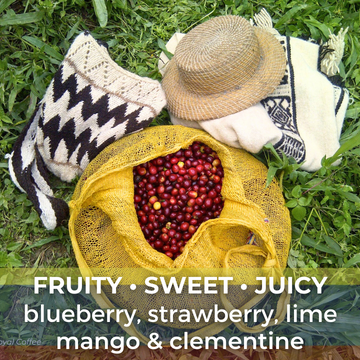Home Coffee Roasting Tutorial Part 2
How to Roast Coffee at Home — Coffee Roasting Profiles Basics
The Specialty Coffee Association of America (SCAA) is attempting to bring some order to the way we describe how darkly a coffee is roasted. The terms they use are more simple, and are based on a color scale called the "Agtron Scale", named for the company that developed the meter used to read the colors. The terms we use are a bit archaic, I guess, but I kind of like them.
They are still widely used, though precise definitions vary among roasters. I offer them only as a general guide--a starting place for you. Remember--you are your own roastmaster! Roast your coffee the way you like it, regardless of what anyone else says.
When your green coffee beans first begin to roast, they initially turn a bit lighter in color, and give off a"grassy" smell. In a few minutes they reach the first profile listed here:
Cinnamon Roast
- Light brown/tan
- Tastes like toasted grain
- Sour. Acidy.
Soon you begin to hear a definite "cracking" sound, or popping. This is called "The First Crack". The water in the bean is turning to steam, expanding and causing the internal structure of the bean to literally "crack".
American Roast
- Medium light brown
- Used in commercial canned coffee and for robusta beans.
- From this point on, you actually have "coffee"
You can stop the roasting process anywhere that suits you.
City Roast
- Medium brown
- Still dry—no surface oil
- Just after the first crack
- Good roast to taste varietal character.
Now the smell of the coffee has changed to more of a roasted coffee smell. The beans have swollen (almost 1/3 larger) and some smoke from the carmelization of the bean sugars begins to occur.
City + Roast
- Slightly darker brown
- Captured in the short period of time between the first and second cracks.
- Varietal taste characteristics still very much evident.
Now the beans begin to make a rapid crackle type popping. This is caused by more of the bean's structure being ruptured by expanding steam. The chemical changes inside the bean begin to internally generate heat, and the roasting process accelerates.
Full City Roast
- Medium dark brown
- A little surface oil
- Just at, or barely into, the second crack
- Beginnings of bittersweet roast character
- There isn't much difference between City + and Full City, but there is some.
- The time between the two stages is very short, so watch the beans carefully.
The beginning of the Second Crack makes a great place to terminate the roasting process for most coffees unless you are after a distinct profile as more often than not this will achieve a Full City Roast, also called medium roast and most coffees are just fine right here.
Full City + Roast
- Very slightly darker brown
- Second crack in progress
- Beans beginning to be glossy, but not yet oily
- Bittersweet roast character more fully developed
- At this point the beans may be considered "dark roasted".
- This is a great stage for espresso.
The second crack is now complete. This is a dark coffee, and more smoke is being emitted.
Vienna or Light French Roast
- Moderate dark brown
- More surface oil
- More bittersweet, caramelly
- Beginnings of "smokey" roast flavor
- Muted acidity
- This is about as dark as I go when roasting for espresso
- Makes a good profile for dark roasted drip brewed coffee.
French Roast
- Dark brown
- Oily
- Beginnings of burned undertones
- I rarely roast darker than a French roast
- I often use this profile when using a plunge pot (French press).
Italian Roast
- Very dark brown
- Very oily
- More burned undertones
- Low acidity
Spanish Roast
- Very dark brown, nearly black
- Very shiny
- Charcoal undertones, This is a burned coffee.
- Flat.
Note: Roast profile terms used in the coffee industry are not as standard as you might think. Here we offer the terms as we use them. For more on determining roast levels with included pictures, check out Roast Levels: A Primer.






